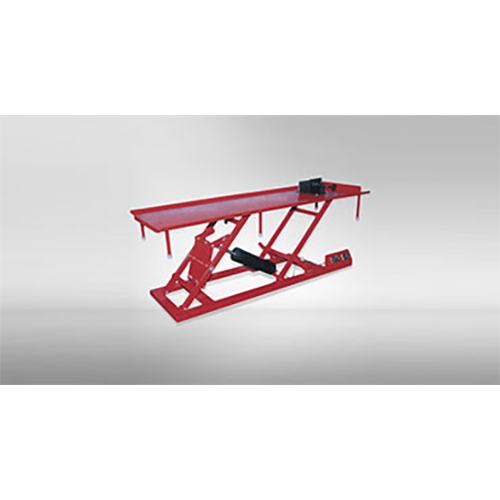Call Us Now :-08045800480

MULTI UTILITY LIFT
Product Details:
- Hoist Way Size 3777 x 3320 x 520 mm
- Power Supply 415 V
- Max. Lifting Height 1800 mm Millimeter (mm)
- Max. Lifting Weight 4000 Kilograms (kg)
- Click to view more
X
MULTI UTILITY LIFT Price And Quantity
- 1 Unit
MULTI UTILITY LIFT Product Specifications
- 415 V
- 1800 mm Millimeter (mm)
- 3777 x 3320 x 520 mm
- 4000 Kilograms (kg)
MULTI UTILITY LIFT Trade Information
- Cash Advance (CA)
- 100 Unit Per Month
- 10 Days
- All India
Product Description
A multi-utility lift, also known as a multi-utility elevator or multi-purpose lift, is a type of vertical transportation system used for various applications beyond the typical passenger or freight elevators. These lifts are designed to accommodate a wide range of purposes, making them versatile and adaptable for different industries and environments.
Here are some common applications and features of multi-utility lifts:
1. Passenger Transport: Multi-utility lifts can be used for transporting passengers within buildings, just like traditional elevators. They can be found in residential buildings, offices, hotels, and other structures where people need to move vertically.
2. Freight and Cargo: These lifts are also suitable for transporting goods and cargo, including heavy and oversized items. They are often used in warehouses, factories, and industrial facilities.
3. Service Lifts: Multi-utility lifts can serve as service elevators for maintenance personnel, providing easy access to various floors for repairs and maintenance work.
4. Hospital Use: In hospitals, these lifts may serve as a combination of passenger and medical lifts, allowing for the transportation of patients and medical equipment, such as stretchers and hospital beds.
5. Dumbwaiters: Smaller multi-utility lifts, known as dumbwaiters, are used in restaurants, hotels, and homes for the transportation of food, dishes, and other items between floors.
6. Accessibility: They can be designed to accommodate individuals with disabilities, providing accessibility features like wider doors, handrails, and easy-to-use controls.
7. Scenic Lifts: In some cases, multi-utility lifts are used as scenic elevators, with glass walls or panoramic views to enhance the passenger experience and provide a unique perspective of the surroundings.
8. Heavy Industrial Use: In industries such as construction and mining, heavy-duty multi-utility lifts are used to transport equipment, materials, and personnel in challenging environments.
Key features of multi-utility lifts often include:
1. Variable weight capacity: They can be designed to handle different loads, from light passenger transport to heavy cargo.
2. Customizable interior configurations: The interior can be adapted to suit the specific needs of the application.
3. Safety features: Multi-utility lifts are equipped with safety mechanisms to prevent accidents and ensure reliable operation.
4. Efficient energy usage: Many modern multi-utility lifts are designed to be energy-efficient and environmentally friendly.
5. Advanced control systems: They often come with advanced control systems for smooth and precise operation.
FAQ:
Q. What is a multi-utility lift?
Ans: A multi-utility lift, also known as a multi-purpose lift or multi-utility elevator, is a type of vertical transportation system designed for various applications beyond standard passenger or freight elevators. They are versatile and adaptable for different purposes.
Q. What are the common applications of multi-utility lifts?
Ans: Common applications include passenger transport, freight and cargo handling, service lifts for maintenance, hospital use, dumbwaiters for food and item transport, accessibility lifts, scenic lifts, and heavy industrial use in challenging environments.
Q. What are the key features of multi-utility lifts?
Ans: Key features often include customizable weight capacity, interior configurations, safety mechanisms, energy efficiency, and advanced control systems.
Q. Can multi-utility lifts be used in residential buildings?
Ans: Yes, multi-utility lifts can be used in residential buildings to serve various purposes, including passenger transport, accessibility for individuals with disabilities, and even as dumbwaiters for transporting items between floors.
Q. Are there safety standards for multi-utility lifts?
Ans: Yes, there are safety standards and regulations that govern the design, installation, and maintenance of multi-utility lifts to ensure the safety of passengers and operators.
Q. How do multi-utility lifts differ from traditional elevators?
Ans: Multi-utility lifts are designed to serve multiple purposes, whereas traditional elevators are typically designed for specific functions, such as passenger transport or freight handling. Multi-utility lifts are more versatile and can be customized for various applications.
Q. What are the energy-saving features of multi-utility lifts?
Ans: Energy-saving features may include efficient motor systems, regenerative braking to capture and reuse energy, and LED lighting, among others, to reduce power consumption.
Q. Can multi-utility lifts be retrofitted into existing buildings?
Ans: In many cases, multi-utility lifts can be retrofitted into existing buildings, although it may require modifications to the building's structure and electrical systems to accommodate the lift's requirements.
Q. Are multi-utility lifts suitable for outdoor use?
Ans: Some multi-utility lifts are designed for outdoor use, but they need to be weatherproofed and constructed to withstand exposure to the elements, such as rain, wind, and temperature fluctuations.
Q. Do multi-utility lifts require regular maintenance?
Ans: Yes, like any mechanical system, multi-utility lifts require regular maintenance to ensure safe and reliable operation. Maintenance schedules and requirements may vary based on the specific lift and its usage.
Q. Can multi-utility lifts be customized to match the building's aesthetics?
Ans: Yes, many multi-utility lifts can be customized in terms of interior design, materials, and finishes to match the aesthetics of the building or facility where they are installed.
Tell us about your requirement

Price:
Quantity
Select Unit
- 50
- 100
- 200
- 250
- 500
- 1000+
Additional detail
Mobile number
Email
 English
English Spanish
Spanish French
French German
German Italian
Italian Chinese (Simplified)
Chinese (Simplified) Japanese
Japanese Korean
Korean Arabic
Arabic Portuguese
Portuguese





 Call Me Free
Call Me Free
